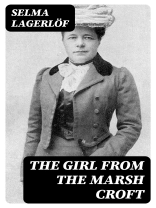In ‘The Girl from the Marsh Croft, ‘ Selma Lagerlöf weaves a poignant tale set against the richly detailed landscape of rural Sweden. The narrative intricately captures the life of a young girl named Elin, whose journey of self-discovery unfolds amidst the stark beauty of her surroundings. Lagerlöf’s lyrical prose is imbued with a sense of mysticism, reflecting themes of love, societal constraints, and the interplay between nature and humanity. The novel stands as a significant example of early 20th-century Swedish literature, illuminating regional dialects and folklore while simultaneously speaking to universal human experiences. Selma Lagerlöf, the first woman to win the Nobel Prize in Literature, drew inspiration from her Swedish heritage, deeply embedding a sense of place within her work. Her upbringing in Värmland greatly influenced her storytelling, allowing her to blend realism with fantastical elements, thereby enriching her narratives. Lagerlöf’s deeply empathetic portrayal of her characters can be traced to her progressive views on women’s roles and social justice, which resonated in her literary endeavors. Readers are encouraged to immerse themselves in ‘The Girl from the Marsh Croft, ‘ as it offers not only a compelling story but also a rich exploration of societal norms and the human spirit. Lagerlöf’s masterful blend of folklore and realism invites readers to reflect on their own journeys, making this novel an enduring classic that shall resonate with them long after the final page.
लेखक के बारे में
Selma Lagerlöf (1858–1940) was a pioneering Swedish author and the first woman to win the Nobel Prize in Literature in 1909. Born in Mårbacka, Värmland, Lagerlöf started as a country school teacher but her literary career was established when her novel ‘Gösta Berling’s Saga’ was published in 1891. Her narrative style combined realism with folklore and legend, often exploring the rural life of Sweden. She drew characters that were richly detailed and grounded in their cultural heritage. Notably, Lagerlöf’s ‘The Wonderful Adventures of Nils’ has been a cherished children’s classic, captivating imagination through a blend of education and whimsy. Her commitment to idealism and humanistic values reflected in her work the belief that literature could foster a better society. This vision is also evident in ‘The Girl from the Marsh Croft’ (1908), a novella that portrays the transformation of its protagonist through themes of redemption and social justice. Lagerlöf’s literature transcended the boundaries of her time, highlighting her as a central figure in Swedish cultural history, and influencing both the national literary cannon and the broader scope of early 20th-century literature. Her legacy endures, not only through her profound storytelling but also through her political influence, as she actively engaged in the women’s suffrage movement and other social issues of her era.












